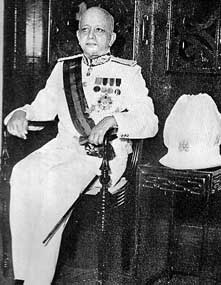The lucky ones who became MPs uncontested
It's not often that candidates at general elections get elected uncontested. In the first Parliament, there was one seat where only a single candidate submitted his nomination. He was H. S. Ismail who was the only candidate for the Puttalam seat. He did not come forward as a member of a political party. He was an independent candidate. (He was elected Speaker of the Third Parliament – 1956 – 59).
The next occasion when candidates were elected uncontested was in the 1965 general election for the sixth Parliament when only two candidates submitted nominations for the two-member electoral district of Colombo South. The two were from two different political parties. The candidates were United National Party's.
J. R. Jayewardene and Lanka Sama Samaja Party's Bernard Soysa.
When nominations were received on April 23, 1970 to elect candidates for the seventh Parliament, a candidate got elected uncontested in a rather unusual way. Two candidates submitted nominations for the Welimada seat. One was an independent candidate and the other was from the Sri Lanka Freedom Party (SLFP). An objection was raised against the independent candidate, Percy Samaraweera that he had not signed his nomination papers. The objection was accepted by the Returning Officer – the official who accepts nominations. The other candidate, R. M. Bandara (SLFP) was declared as elected Member of Parliament (MP).
A total of 441 candidates submitted nominations that day. Of them, 305 were from political parties and 136 were independent candidates. The number of MPs had increased to 151 by then. They were being elected by voters in 145 electorates.
Fifteen political parties had applied to the Commissioner of Elections to be registered as recognized parties. The conditions needed for the purpose were fulfilled by only eight of them. Candidates offering themselves for election from the recognized parties had to deposit a lesser amount. The amount had been reduced from Rs. 1,000 to Rs. 500 earlier and was further reduced to Rs. 250 per candidate at the 1970 general election. This concession was not available to independent candidates. They still had to pay Rs. 1,000 each.
While the UNP put forward 130 candidates the SLFP had 108, followed by the Sinhala Mahajana Pakshaya – a new political party formed by one time UNP and later SLFP MP and minister R. G. Senanayake with 50 candidates. The SLFP and the left parties – the LSSP (23) and the Communist Party (CP) had agreed on a Common Programme "in order to carry forward the progressive advance begun in 1956, under the leadership of S. W. R. D. Bandaranaike in order to establish in Ceylon a socialist democracy." A no-contest pact was entered into with the three parties deciding not to contest one another. The LSSP put forward 23 candidates while the CP had nine.
The general election was held on May 27. |

